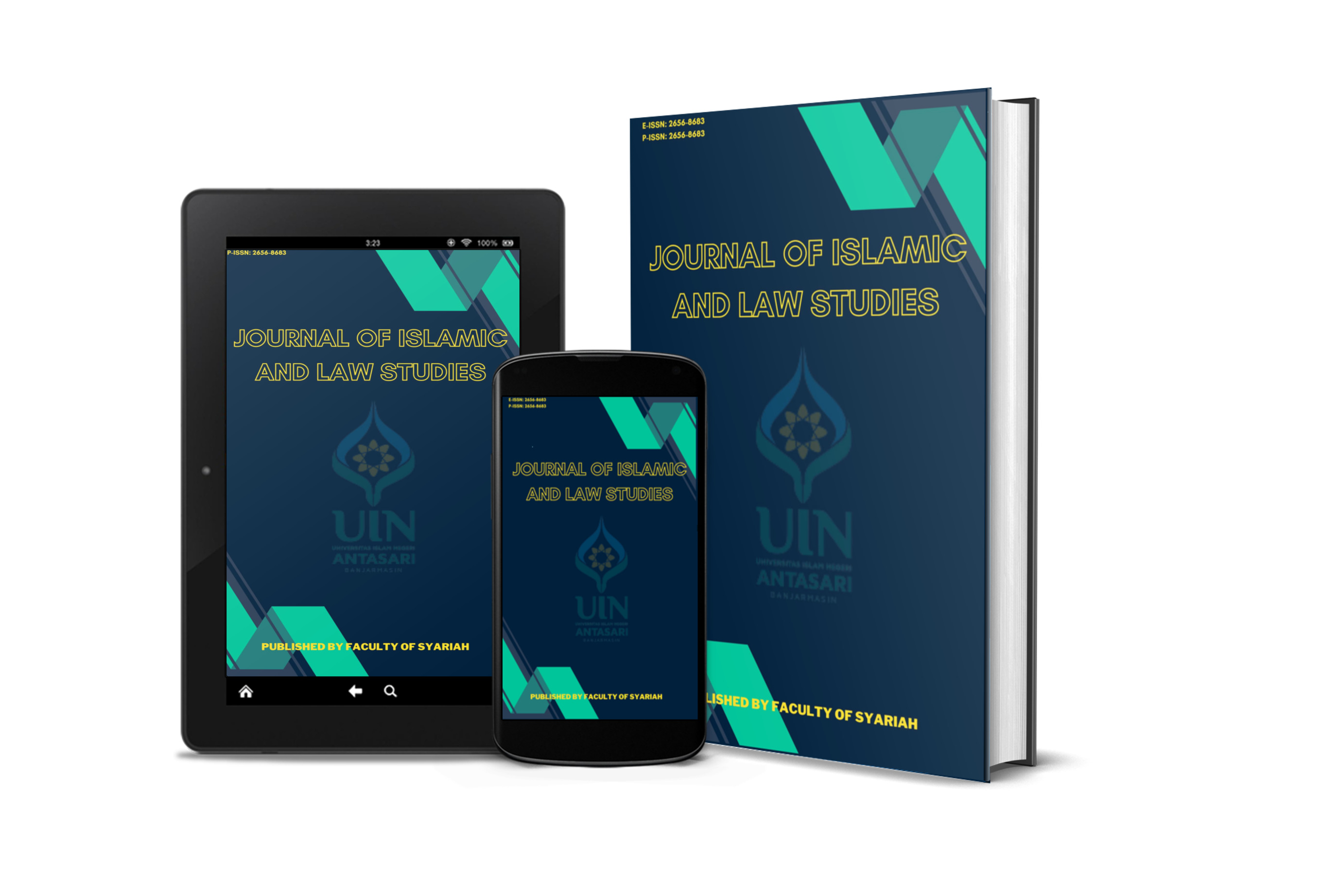Kandungan Hukum Islam Dalam Ayat-Ayat Mutasyabihat
DOI:
https://doi.org/10.18592/jils.v6i1.6829Abstract
Abstract: The study of mutasyabihat verses in relation to Islamic law looks rather unusual. This is because the assumption built by the scholars is "the mutasyabihat verses concentrate more on the field of aqidah (al-ahkam al-I'tiqadiyah)". Meanwhile, the verses regarding halal-haram law include the muhkamat verse (the meaning is clear); as opposed to the mutasyabihat verse. This paper attempts to present the content of Islamic law (shara' law) in mutasyabihat verses. The result actually strengthens the existence of mutasyabihat verses on musykil, musytarak, and mubham pronunciations. The themes of the verse become clearer when viewed with a substantive approach, for example the law of marriage polygamy, the tradition of destroying the back wall of the house after Umrah or Hajj, the law against polytheists, the meaning of quru' for women who have lost their husbands, the law on coalitions of Muslims and non-Muslims. , and others tend to say that the legal verses are actually more mutasyabihat. The aim is allegedly to strengthen faith in Allah and so that the universality of the Qur'an is maintained Abstrak: Kajian tentang ayat-ayat mutasyabihat dalam hubungannya dengan hukum Islam terlihat agak tidak lazim. Hal ini karena asumsi yang dibangun para ulama “ayat-ayat mutasyabihat lebih berkonsentrasi pada bidang akidah (al-ahkam al-I’tiqadiyah)”. Sementara ayat-ayat tentang hukum halal – haram termasuk ayat muhkamat (jelas maknanya); sebagai lawan ayat mutasyabihat. Tulisan ini berusaha mengemukakan kandungan hukum Islam (hukum syara’) dalam ayat-ayat mutasyabihat. Hasilnya justuru menguatkan adanya ayat-ayat mutasyabihat pada lafal-lafal musykil, musytarak, dan mubham. Tema-tema ayat pun menjadi lebih jelas ketika dilihat dengan pendekatan substantif misalnya hukum poligami perkawinan, tradisi merusak tembok belakang rumah setelah umrah atau haji, hukum memerangi orang musyrik, makna quru’ bagi wanita yang ditinggal mati suami, hukum koalisi muslim dan non-muslim, dan lain- lain cenderung dikatakan ayat-ayat hukum justru lebih banyak mutasyabihatnya. Tujuannya diduga untuk mengokohkan keimanan kepada Allah dan agar universalitas Alquran tetap terpeliharaReferences
DAFTAR PUSTAKA
Fattah al-Qadhi, Abdul , Min ‘Ulum al-Qur’an, Kuwait: Dar al-'Ilm, 1970
al-Shabuni, Muhammad Ali , Shafwat al-Tafasir, I, Beirut: Dar al-Fikr, 1996
al-Ashfahany, Al-Raghib, Mu’jam al-Mufradat Alfazh al-Qur’an, Beirut: Dar al-Fikr, tth Tahqiq: Nadim Ma’arsylI
Ash-Shiddieqy, Hasbi, Ilmu-Ilmu al-Qur’an, Jakarta: Bulan Bintang, 1993.
al-Suyuthi, Imam Jalaluddin, al-Itqan fi ‘Ulum al-Qur’an, Jilid II, Beirut: Dar al-Fikr, tt.
al-Maliki , Muhammad bin ‘Alawy, Zubdah al-Itqan fi ‘Ulum al-Qur’an, al-Mamlakah al-Arabiyyah al-Syu.udiyyah; Dar al-Syuruq, t.th.
al-Maraghi, Ahmad Mushthafa, Tafsir al-Maraghi, II, Mesir: Mushthafa al-Babi al-Halabi, 1430 H.
al-Qaththan, Manna’, Mabahits fi ‘Ulum al-Qur’an, (Mesir). tth.f
Tim Penulis, Ensiklopedi Hukum Islam, Jilid 4, Jakarta: PT Ichtiar Baru Van Hoeve, 1996
Tim Penerjemah , Alquran dan Terjemahnya, Mekkah: al-Haramain al-Syarifain, 1412 H.
al-Thabari, Ibnu Jarir Tafsir al-Thabari, Juz VI, (Mesir: Muassasah al-Risalah, 1420 M = 2000 H), hlm. 174.
http://quran.ksu.edu.sa/tafseer/ibn.katsir/sura3-aya7.html
Downloads
Published
Issue
Section
License
Authors who publish with this journal agree to the following terms:
- Authors retain copyright and grant the journal right of first publication with the work simultaneously licensed under a Creative Commons Attribution License that allows others to share the work with an acknowledgement of the work's authorship and initial publication in this journal.
- Authors are able to enter into separate, additional contractual arrangements for the non-exclusive distribution of the journal's published version of the work (e.g., post it to an institutional repository or publish it in a book), with an acknowledgement of its initial publication in this journal.
- Authors are permitted and encouraged to post their work online (e.g., in institutional repositories or on their website) prior to and during the submission process, as it can lead to productive exchanges, as well as earlier and greater citation of published work.




